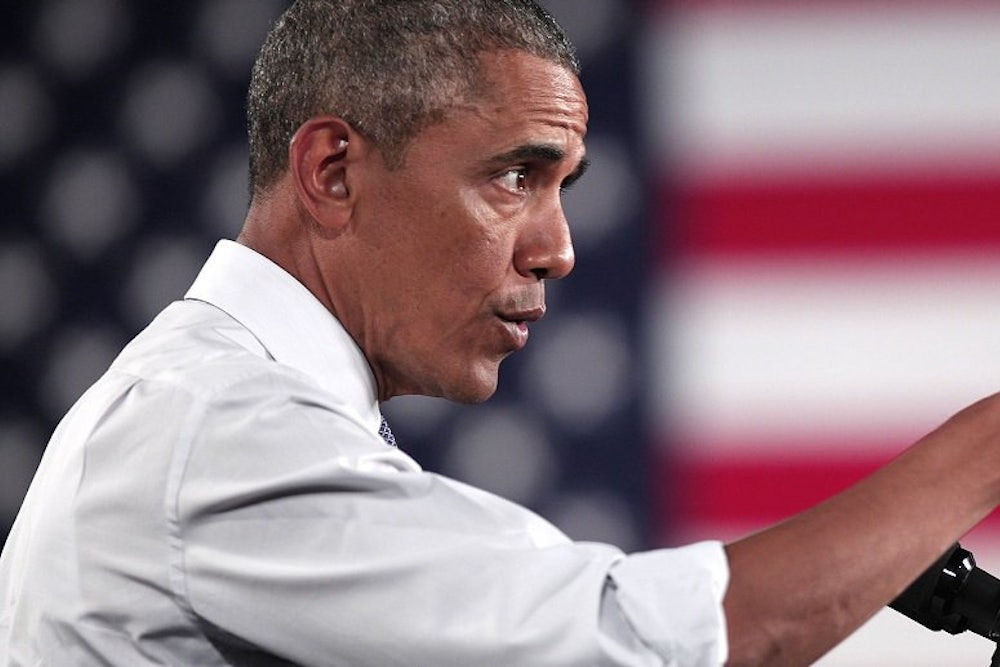On Monday, President Barack Obama will unveil his budget for the 2016 fiscal year, a document that officially kicks off the next major battle between Democrats and Republicans over fiscal policy. The White House has released different pieces of the budget over the past month, including unveiling a new tax plan targeted at the middle class before the State of the Union address. But the 2016 budget also contains two new proposals that are essential for future economic growth.
First, Obama is proposing a six-year, $478 billion infrastructure plan to revamp and modernize our highways, bridges and mass transit system across the country. That sounds like a lot, but like the $301 billion infrastructure plan in Obama’s 2015 budget, it’s not has big as it sounds. To understand that, you have to understand how the federal government currently finances its infrastructure spending.
Right now, highway spending goes through the Highway Trust Fund, which is funded by the gas tax—a tax that has not been updated in decades, allowing inflation to eat away at the real value of it. In recent years, that has caused the trust fund to face a shortfall. In turn, Congress has transferred funds from general revenue sources to close that hole. Over the next six years, the fund has projected outlays of $329 billion, with a projected gap of $89 billion. The White House’s plan covers that $89 billion gap and then invests another $149 billion in infrastructure spending. That’s around $25 billion a year in additional infrastructure spending, approximately the same per year as in Obama’s 2015 budget.
Republicans will certainly object to the proposal, regardless of how the White House pays for it (more on that in a moment). But they’re going to have to come up with a plan of their own. The Highway Trust Fund has a shortfall of $13 billion for the 2016 fiscal year and will need a transfer of revenue by the end of May. Already some Republicans have come out in favor for raising the gas tax and indexing it to inflation to make up for the shortfall. Of course, that’s unacceptable to many Republicans, particularly in the House. So it’s hard to forecast how this situation will play out.
The Obama administration will pay for the plan with one-time transition revenue as part of corporate tax reform—the second major proposal in the 2016 budget. American companies currently hold nearly $2 trillion in profits overseas, refusing to repatriate them in order to avoid billions of dollars in taxes. The U.S. corporate tax system taxes all profits at 35 percent, including foreign profits with a credit for taxes paid in the foreign country. For example, suppose a foreign subsidiary of a U.S. company pays a tax rate of 10 percent to the foreign country. When that company repatriates those profits, it must pay a tax rate of 25 percent to the federal government (35 percent minus 10 percent). Instead of repatriating those profits, U.S. companies have stashed the money abroad. The White House is proposing a one-time, mandatory tax of 14 percent on that $2 trillion, no matter if the U.S. companies repatriate the money or not. That will bring in the $238 billion in revenue—money earmarked for Obama’s infrastructure plan.
Traditionally, allowing companies to bring their foreign profits back into the U.S. and to avoid the full 35 percent tax rate further incentivizes companies to stash profits abroad in the future, waiting for another chance to repatriate them at a lower rate. That’s what happened after Congress passed a repatriation tax holiday in 2004. But the White House avoids this problem with a new 19 percent tax that will apply to all corporate profits, which was first reported Saturday by Bloomberg. This proposal will eliminate any incentive to keep profits abroad because corporations will face the 19 percent tax rate no matter whether they repatriate the money or not. (U.S. companies still receive credit for taxes paid to the foreign country.) As in his previous corporate tax plans, Obama wants to lower the corporate tax rate from 35 to 28 percent. He’ll also reduce the corporate tax rate for manufacturers to 25 percent.
Since the 19 percent foreign rate is less than the 28 percent corporate rate, this tax structure will still incentivize U.S. companies to shift their profits abroad. The administration also intends to crack down on such tax avoidance strategies. But such a corporate tax system certainly poses a risk that U.S. companies will find ways to avoid the 28 percent domestic corporate tax.
These proposals face very long odds in the Republican-controlled Congress, despite the fact that many political analysts pinpointed infrastructure spending and corporate tax reform as two areas where Democrats and Republicans could find common ground after the midterms. But it’s a legitimate proposal that Republican leaders shouldn’t brush away as “unserious” just because it raises revenue.
